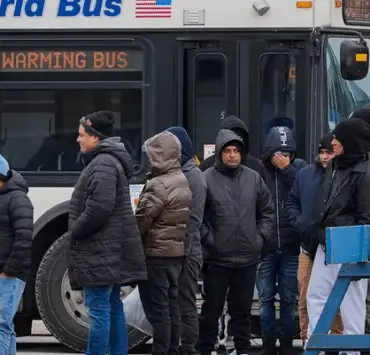In response to the escalating housing crisis, Montgomery County, Maryland, is considering a groundbreaking proposal that could reshape the landscape of affordable housing. Zoning Text Amendment 24-01, championed by Council Vice President Kate Stewart, is seeking to empower churches to build affordable housing units on their spare land. Let’s delve into the details of this proposal and its potential impact on addressing the pressing issue of housing affordability in the county.
Unlocking Church Land for Affordable Housing
Montgomery County Council Vice President Kate Stewart is spearheading Zoning Text Amendment 24-01, a bold initiative that aims to leverage unused church land for the construction of affordable housing units. The proposal comes at a crucial time when the county is grappling with a shortage of around 30,000 housing units, and nearly one in four residents is burdened by housing costs exceeding half of their income.
Overcoming Zoning Barriers
Current zoning codes pose challenges to housing development, particularly in zones designated for single-family homes. This proposal seeks to dismantle these barriers for religious institutions, allowing them to build housing units, provided 30-50% of these units are designated as affordable housing. This strategic move aims to accelerate the pace of addressing the housing crisis, especially when available land for construction is becoming scarce.
Collaboration with Faith Institutions
Stewart emphasizes the collaborative nature of this approach, recognizing the role of faith institutions in contributing to community well-being. Many churches, possessing surplus land such as parking lots, are eager to support the mission of their institutions by addressing the local housing crisis. The proposed zoning change facilitates this collaboration and streamlines the process for churches to play a more active role in building affordable housing.
Addressing Urgent Housing Needs
With the county facing a dire need for affordable housing options, Stewart sees this zoning change as a catalyst for change. It’s not just about constructing more houses; it’s about creating homes that are within reach for a broader segment of the population. By easing restrictions on housing development, the county aims to encourage the creation of both rental and ownership units, diversifying the housing market and meeting the needs of different communities.
Challenges and Future Steps
While this zoning amendment represents a significant stride, advocates like Montgomery Housing Partnership President Robert Goldman acknowledge that it’s not a panacea. There’s recognition that not every congregation may have the capacity to embark on such projects. However, it is viewed as a valuable addition to the county’s toolkit in the ongoing battle against the affordability crisis. Goldman stresses the need for a multifaceted approach, with this zoning change being just the beginning of a more comprehensive strategy.
Conclusion
As Montgomery County awaits the fate of Zoning Text Amendment 24-01, it’s clear that the conversation around affordable housing is evolving. The potential collaboration between churches and local government opens new possibilities for addressing the housing crisis creatively. If successful, this innovative approach could serve as a model for other communities grappling with similar challenges, heralding a new era of collaborative solutions to housing affordability.
Related posts:
 Affordable Rental Provider Repays $710K to Arlington County
Affordable Rental Provider Repays $710K to Arlington County
 Reduce Your Environmental Footprint: Simple Water Conservation Tips for Your Home
Reduce Your Environmental Footprint: Simple Water Conservation Tips for Your Home
 10 Precautions to Stay Safe During a Home Renovation
10 Precautions to Stay Safe During a Home Renovation
 Surge in US Housing: A Close Look at the November 2023 Boom
Surge in US Housing: A Close Look at the November 2023 Boom
 Seattle Fort Lawton Housing Plan Revision: A New Vision for Affordable Living
Seattle Fort Lawton Housing Plan Revision: A New Vision for Affordable Living



